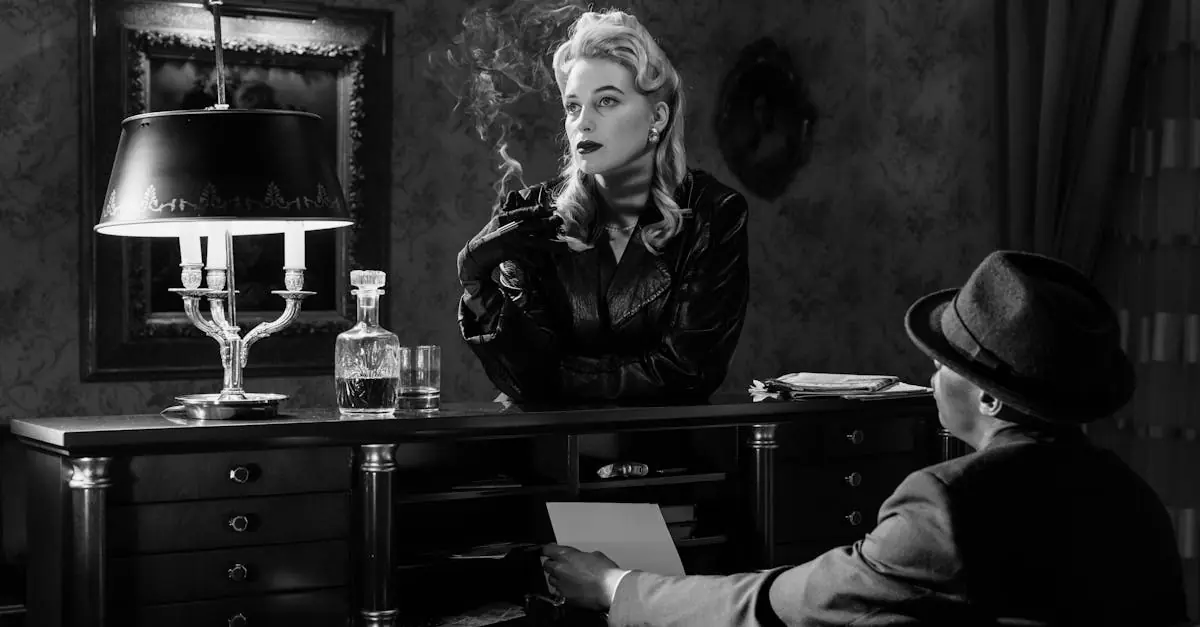Table of Contents
ToggleIn the bustling world of politics, the Majority Whip is like the unsung hero of the legislative arena. While the spotlight often shines on the Speaker and high-profile senators, the Whip is the one ensuring that the party’s agenda doesn’t go off the rails. Think of them as the friendly traffic cop directing the flow of legislation, making sure everyone stays in line and plays nice.
But don’t let the title fool you—this role isn’t just about waving a metaphorical wand and hoping for the best. The Majority Whip juggles persuasion, strategy, and a dash of charm to rally votes and maintain party unity. It’s a position that requires a keen understanding of politics and an ability to navigate the often-turbulent waters of Congress. So, let’s dive into the fascinating world of the Majority Whip and uncover what makes this role so crucial in shaping the legislative landscape.
Overview of the Majority Whip Role
The Majority Whip plays a crucial role in maintaining party cohesion and facilitating legislative success. This position requires a strong grasp of political dynamics and effective communication skills.
Definition and Purpose
The Majority Whip’s primary function centers around rallying party members to support proposed legislation. By understanding member preferences, the whip ensures proper alignment and votes during critical decisions. Additionally, this role involves strategizing on legislative priorities, engaging in negotiations, and addressing any concerns from fellow party members. Maintaining party unity often translates into smoother legislative processes. The whip’s influence extends beyond mere vote counting, shaping how party members approach and interact with policy issues.
Historical Context
The Majority Whip position originated in the British Parliament in the 19th century. Initially, whips acted as messengers, tasked with conveying party instructions. Over time, the role evolved, gaining prominence in the U.S. Congress during the early 20th century. Throughout the decades, the responsibilities expanded significantly, reflecting the increasing complexity of legislative work. Contemporary whips now wield considerable power, playing a vital role in legislation’s success or failure. Historical practices and shifts in the political landscape solidified the Majority Whip’s place as an essential figure within party leadership.
Responsibilities of the Majority Whip
The Majority Whip holds significant responsibilities that enhance the effectiveness of the legislative process. These duties encompass coordinating party efforts and facilitating voting activities.
Legislative Duties
Legislative duties define a Majority Whip’s role. They focus on gathering votes for proposed legislation and ensuring party members understand the implications of bills. Understanding individual preferences aids in aligning votes during critical discussions. Engaging in strategic planning and negotiation enhances the whip’s influence. Monitoring legislative schedules helps anticipate challenges that may arise. Additionally, communicating key information regarding policy priorities to party members ensures informed decision-making.
Party Coordination
Party coordination is essential for the Majority Whip’s effectiveness. Facilitating communication among party members strengthens unity and cohesion. The whip regularly meets with party leaders to strategize on legislative initiatives and priorities. Mobilizing support for votes enhances legislative success and efficiency. Addressing concerns from peers fosters loyalty and collaboration within the party. Employing a network of deputies can streamline efforts, ensuring timely feedback on member sentiments, thereby reinforcing alignment within the party.
Strategies Used by Majority Whips
Majority whips employ various strategies to effectively manage party alignment and legislative success.
Vote Counting Techniques
Effective vote counting is crucial for Majority Whips. They systematically assess member positions on upcoming legislation. By utilizing issue preference surveys, they gather essential data from party members. This information helps whips predict vote outcomes. Moreover, they often meet with members one-on-one to gauge support levels. Engaging with swing voters allows whips to identify key influencers within the party. Analyzing trends in previous votes also aids in understanding member behavior. This combination of techniques ultimately facilitates informed decision-making and strategic planning.
Communication with Members
Communication strategies significantly enhance the Majority Whip’s effectiveness. Whips maintain open lines of communication with party members. Regular updates keep members informed about legislative priorities and implications. Through briefings and informal meetings, whips engage members in discussions about upcoming votes. Utilizing tools like newsletters or text alerts ensures members receive timely information. Building personal relationships fosters trust, which enhances collaboration. Whips address concerns promptly, offering reassurance while guiding members toward party objectives. This proactive communication creates a cohesive party atmosphere and empowers informed voting decisions.
Impact of the Majority Whip Role
The Majority Whip significantly influences the legislative process. By rallying party members, the whip ensures alignment on key votes and facilitates communication among legislators.
Influence on Legislation
Legislation often hinges on the Majority Whip’s ability to consolidate support. The whip identifies member preferences and analyzes potential vote outcomes. This extensive knowledge enables them to create strategies that maximize party unity. Engaging directly with members through surveys and meetings highlights their priorities and concerns, resulting in more effective legislation. In this capacity, the whip transforms member insights into actionable strategies that promote successful voting outcomes.
Relationship with Leadership
A strong relationship exists between the Majority Whip and party leadership. The whip serves as a critical bridge, communicating leadership priorities to party members. This dynamic allows for a coordinated approach to legislative strategy, facilitating seamless discussions among leaders and legislators. They work closely with the Speaker and other top officials, ensuring everyone remains informed and aligned on key issues. Such collaboration strengthens party cohesion, leading to more effective decision-making and legislative success.
Challenges Faced by Majority Whips
Majority Whips encounter several challenges that impact their effectiveness in promoting party unity and advancing legislation.
Navigating Party Divisions
Navigating party divisions presents a significant challenge for Majority Whips. Disagreements among party members regarding policy positions can complicate efforts to maintain a unified front. Competing interests among factions require the whip to mediate and negotiate continuously. Diverse viewpoints often lead to conflicts, necessitating skilled diplomacy to reach consensus. Building relationships with key stakeholders enhances the whip’s ability to find common ground. Effective communication is essential; it fosters an atmosphere of trust and cooperation. Observing internal dynamics helps the whip anticipate conflicts and address concerns before they escalate.
External Pressures
External pressures also influence the Majority Whip’s role. Various interest groups, media scrutiny, and public opinion can sway legislative priorities. Engaging with lobbyists sometimes leads to competing demands on party members, complicating vote solidification. Recognizing the impact of these external factors helps the whip strategize effectively. Understanding constituents’ preferences enables the whip to align party objectives with public sentiment. This alignment ensures votes reflect broader voter concerns. Adapting to shifting political landscapes becomes essential for achieving legislative goals. Balancing internal party unity with external pressures requires constant vigilance and adaptability.
The Majority Whip’s role is indispensable in shaping the legislative landscape. By fostering party unity and facilitating communication among members, the whip ensures that proposed legislation receives the necessary support for passage. Their strategic insights and interpersonal skills are crucial for navigating the complexities of modern governance.
As they adapt to internal divisions and external pressures, Majority Whips remain at the forefront of legislative success. Their ability to align party objectives with member preferences not only enhances decision-making but also reinforces the overall effectiveness of the legislative process. In a rapidly changing political environment, the Majority Whip’s influence will continue to be a defining factor in the success of legislative initiatives.




